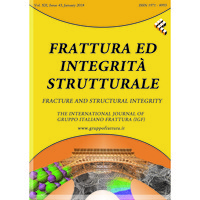
Vladimir Boian
Scientific researcher
less
Related Authors
Jagadeesha T
National Institute of Technology, Calicut
Vladimir Zdravkov
University of Augsburg
Xiaohui Tang
UCLouvain (University of Louvain)
Sergey Seriy
Komsomolsk-on-Amur State Technical University
Emir Alper Türkoğlu
AĞRI İBRAHİM ÇEÇEN ÜNİVERSİTESİ
InterestsView All (24)








Uploads
Papers by Vladimir Boian
parameters of a functional nanostructure — a superconducting spin valve, which is a
multilayer structure consisting of ferromagnetic cobalt nanolayers separated by
niobium superconductor nanolayers. The aim of the work was to study the influence
of the main parameters of the technological regimes of the formation of these
nanosystems: temperature, concentration and spatial distribution of deposited atoms
over the surface of the nanosystem on the atomic structure and morphology of the
nanosystem. The studies were carried out by the molecular dynamics method using
the many-particle potential of the modified immersed atom method. The temperature
in the calculation process was controlled using the Nose-Hoover thermostat. The
simulation of the formation of atomic nanolayers by the method of alternating
directional deposition of layers of different compositions under high vacuum and
stationary temperature conditions is performed. As a result of the studies, the
structure and thickness of the formed nanolayers and the distribution of elements in
the area of their interface were studied. It is shown that alternating layers of the
formed layered nanosystem and their interfaces have a significantly different atomic
structure depending on the main parameters of the technological regimes of the
formation of layered nanosystems.
parameters of a functional nanostructure — a superconducting spin valve, which is a
multilayer structure consisting of ferromagnetic cobalt nanolayers separated by
niobium superconductor nanolayers. The aim of the work was to study the influence
of the main parameters of the technological regimes of the formation of these
nanosystems: temperature, concentration and spatial distribution of deposited atoms
over the surface of the nanosystem on the atomic structure and morphology of the
nanosystem. The studies were carried out by the molecular dynamics method using
the many-particle potential of the modified immersed atom method. The temperature
in the calculation process was controlled using the Nose-Hoover thermostat. The
simulation of the formation of atomic nanolayers by the method of alternating
directional deposition of layers of different compositions under high vacuum and
stationary temperature conditions is performed. As a result of the studies, the
structure and thickness of the formed nanolayers and the distribution of elements in
the area of their interface were studied. It is shown that alternating layers of the
formed layered nanosystem and their interfaces have a significantly different atomic
structure depending on the main parameters of the technological regimes of the
formation of layered nanosystems.